What is the best flooring for schools?
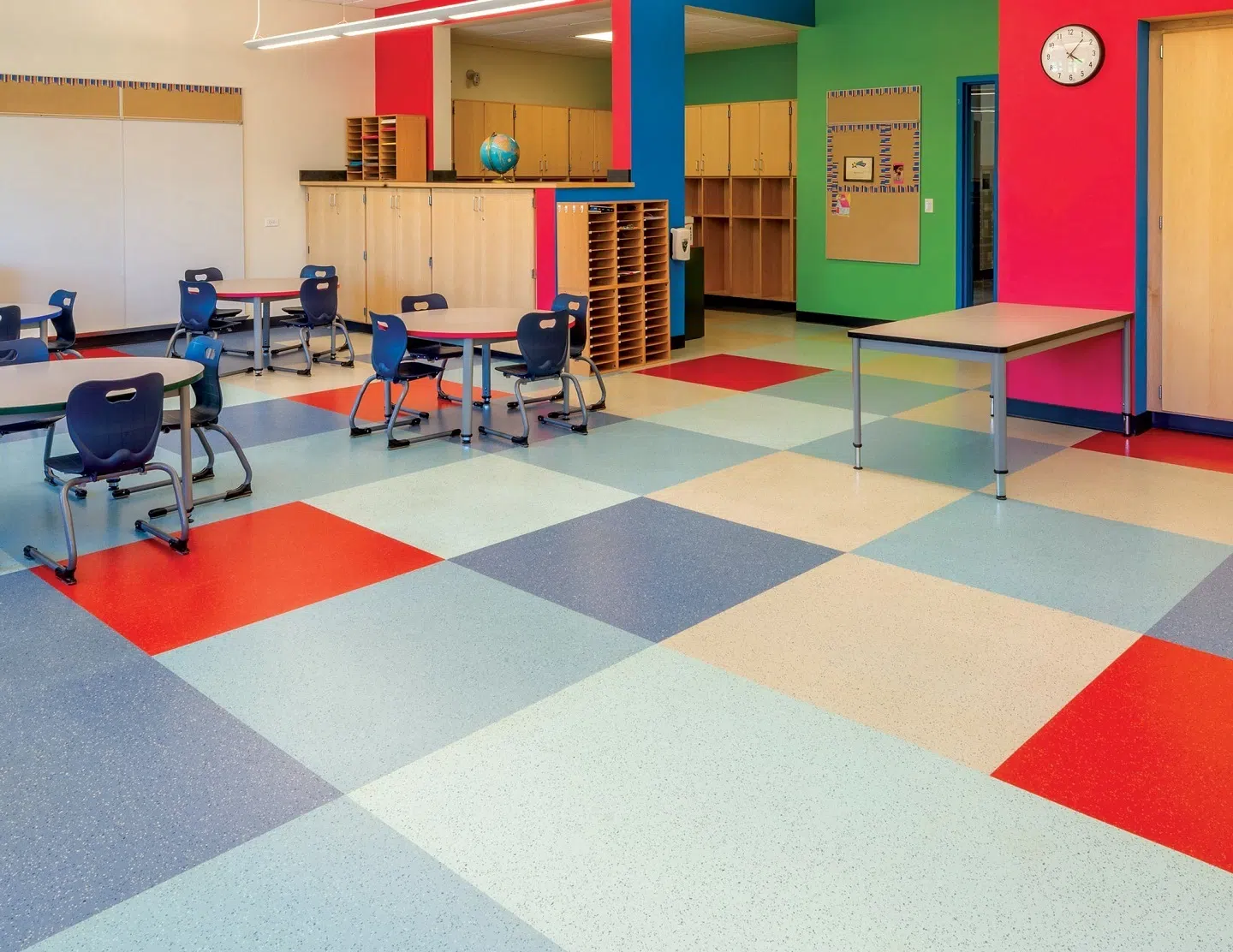
Educational facilities, from elementary schools to universities, are dynamic environments where knowledge is nurtured, creativity thrives, and daily interactions occur. The floor material choice in these spaces is vital in creating an atmosphere that fosters learning, safety, and overall well-being. In this guide, we’ll explore various flooring options tailored to the diverse needs of educational settings.
Selecting the right flooring for educational facilities involves a careful balancing act. The chosen material must be aesthetically pleasing, durable, easy to maintain, and safe for students and staff. Additionally, it should contribute to the acoustic environment, support diverse learning activities, and align with sustainability goals.
Best Flooring for Schools Ideas
School is like a second home for children since they spend nearly 40 hours a week there for nine months, so you need to make sure they are in a healthy environment. A healthy environment can be evaluated by many criteria, such as floor safety. Using non-toxic and allergy-approved floors increases indoor air quality in educational centers. Also, it is crucial to create a quiet, calming space for students; therefore, sound control and using proper acoustic flooring can be beneficial. If you want to reduce sound, the best way is to cut it at the source, the floors. Acoustic floors can reduce noise pollution to create a great educational center, and improve children’s learning experience.
Vinyl Flooring

Vinyl flooring is a versatile and widely adopted choice for educational facilities, offering a range of practical benefits that cater to the unique demands of various spaces within schools and universities.
- Durability and Longevity: Educational spaces see heavy foot traffic daily, from bustling hallways to multipurpose rooms. Vinyl flooring is famous for its durability and capability to withstand wear and tear over time. It’s designed to endure the rigors of constant movement, making it an excellent choice for areas where students and staff traverse frequently. Furthermore, vinyl can maintain its appearance and integrity even under these demanding conditions, ensuring a long-lasting investment.
- Ease of Maintenance: Educational institutions require easy flooring to clean and maintain to uphold hygiene standards. Luxury vinyl flooring is inherently resistant to stains, which is crucial in environments where spills are common. Regular sweeping and occasional mopping are needed to keep vinyl floors pristine. This ease of maintenance reduces the strain on custodial staff and helps keep educational spaces clean and inviting.
- Versatile Aesthetics: Vinyl flooring offers diverse designs, from replicating the look of natural materials like stone and wood and stone to creative patterns and color schemes. This versatility allows educational institutions to tailor their flooring to match the intended atmosphere of each space. For instance, a library may opt for vinyl planks that mimic the warmth of wood, while a science lab might benefit from vinyl tiles with a sleek, sterile appearance. This adaptability ensures that the flooring contributes to the desired ambiance, enhancing the learning experience.
- Safety Considerations: In educational facilities, safety is paramount. Vinyl flooring options often include features like slip resistance, reducing the risk of accidents in high-traffic areas, especially where students move quickly between classes. This slip resistance is particularly important in entrances and common areas, where foot traffic can be especially dense.
- Cost-Effectiveness: Vinyl flooring is often more budget-friendly than natural alternatives like hardwood or stone while providing similar aesthetics. This cost-effectiveness can appeal to educational institutions looking to maximize their investment in flooring materials without compromising quality or visual appeal.
- Environmental Responsibility: Many vinyl flooring manufacturers offer eco-friendly options that are low in volatile organic compounds (VOCs) and made from recycled or recyclable materials. This aligns with the sustainability goals of educational institutions and contributes to healthier indoor air quality.
Carpet
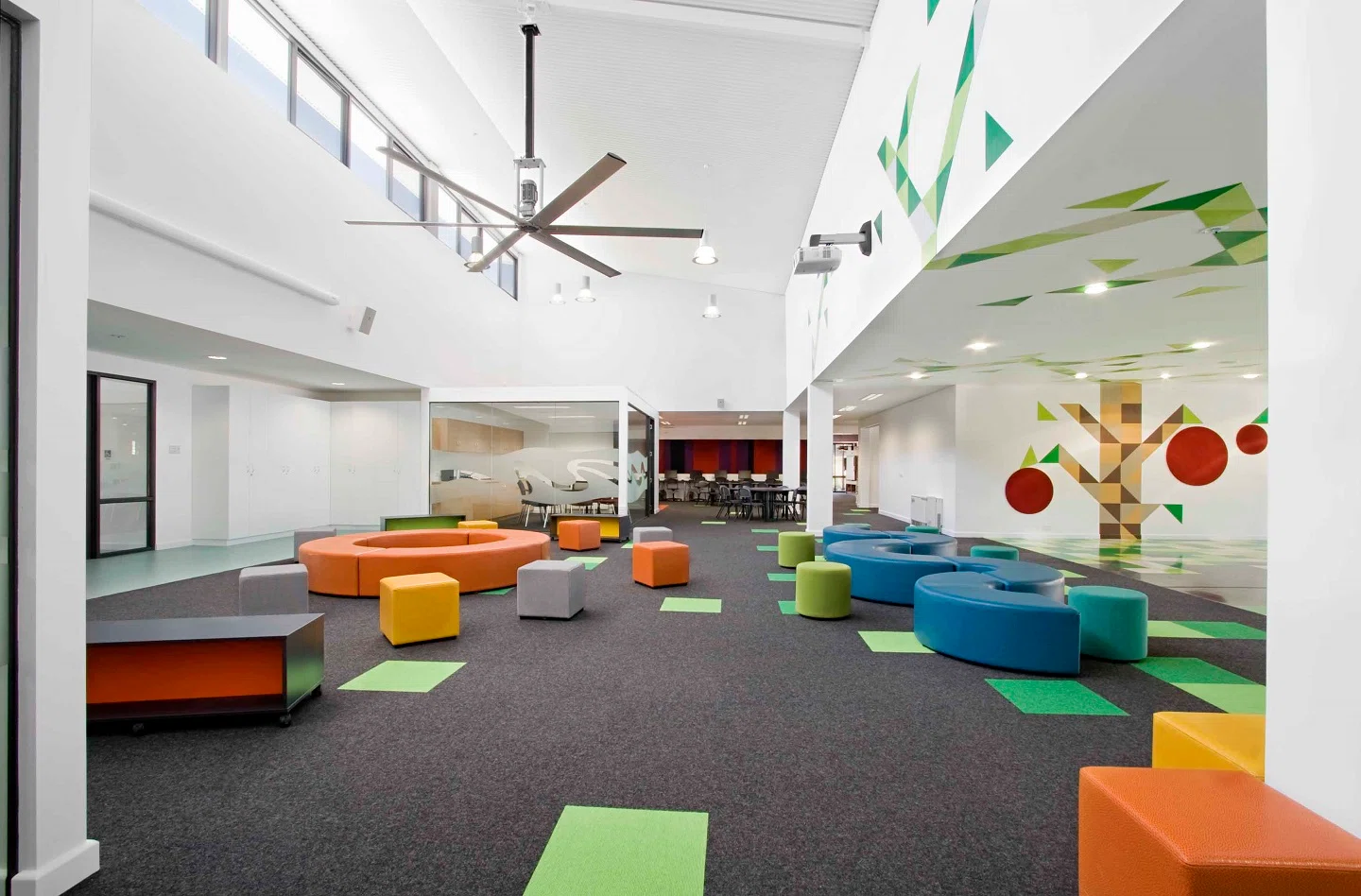
Carpet tiles are a versatile and widely embraced choice for flooring in educational facilities. These modular pieces of carpeting offer a host of advantages that make them suitable for various areas within schools and universities.
- Comfort and Acoustic Benefits: One of the standout features of carpet tiles is their exceptional comfort underfoot. This comfort factor cannot be overstated in classrooms where students and teachers spend hours seated or standing. It reduces fatigue, making for a more pleasant and productive learning experience. Additionally, the soft surface of carpet tiles contributes significantly to noise reduction. This acoustic benefit can help create a more conducive learning atmosphere in bustling educational environments, such as classrooms and libraries. Carpet flooring is one of the perfect options for library flooring at schools. Less noise means fewer distractions, leading to improved focus and comprehension.
- Design Flexibility: Carpet tiles come in various colors, patterns, and textures. This versatility allows educational institutions to create visually appealing spaces that align with their branding or aesthetic preferences. Whether you prefer vibrant and playful designs for a preschool or more subdued, professional patterns for a university office, carpet tiles offer endless possibilities for customization.
- Ease of Maintenance and Durability: To maintain a hygienic and clean environment in educational settings, ease of maintenance is paramount. Carpet tiles are designed with this in mind. They are easy to clean and maintain, with many options featuring stain-resistant properties. In the event of a spill or stain, individual tiles can be replaced without the need to replace an entire carpet, saving both time and money. This modularity is especially beneficial for high-traffic areas where wear and tear may be more pronounced.
Rubber Flooring
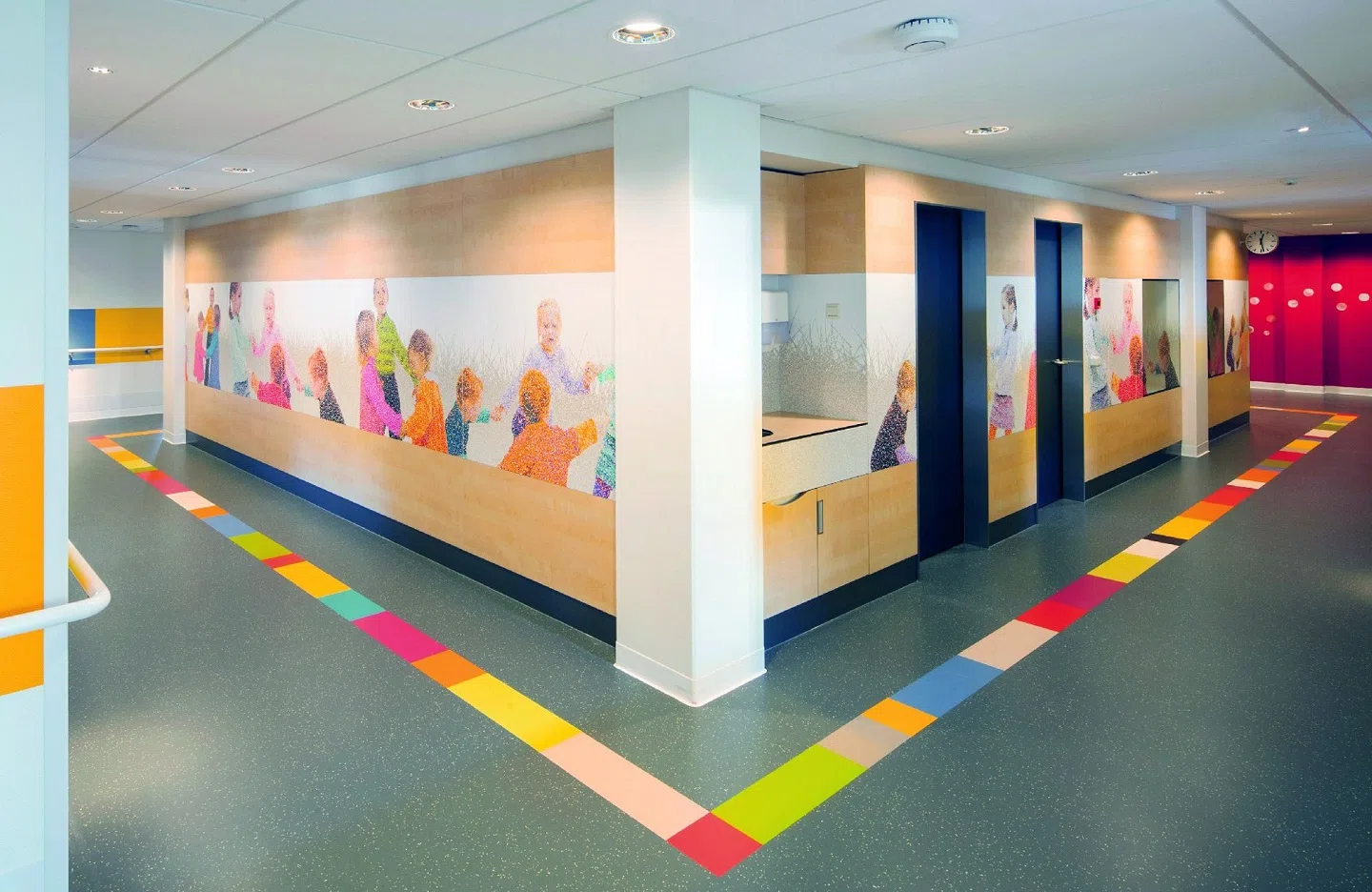
Rubber flooring is a favored option in educational environments for its comfort and resilience. Its cushioned surface reduces fatigue, especially in spaces where students and staff spend prolonged periods, such as classrooms and gymnasiums. Additionally, rubber flooring can withstand substantial wear and tear, making it an enduring choice. It’s particularly suitable for high-impact areas and is known for its longevity. This durability translates to cost-effectiveness, reducing the need for frequent replacements. Rubber flooring’s shock-absorbing properties also enhance safety in active spaces, ensuring a secure environment for physical activities.
Linoleum Flooring
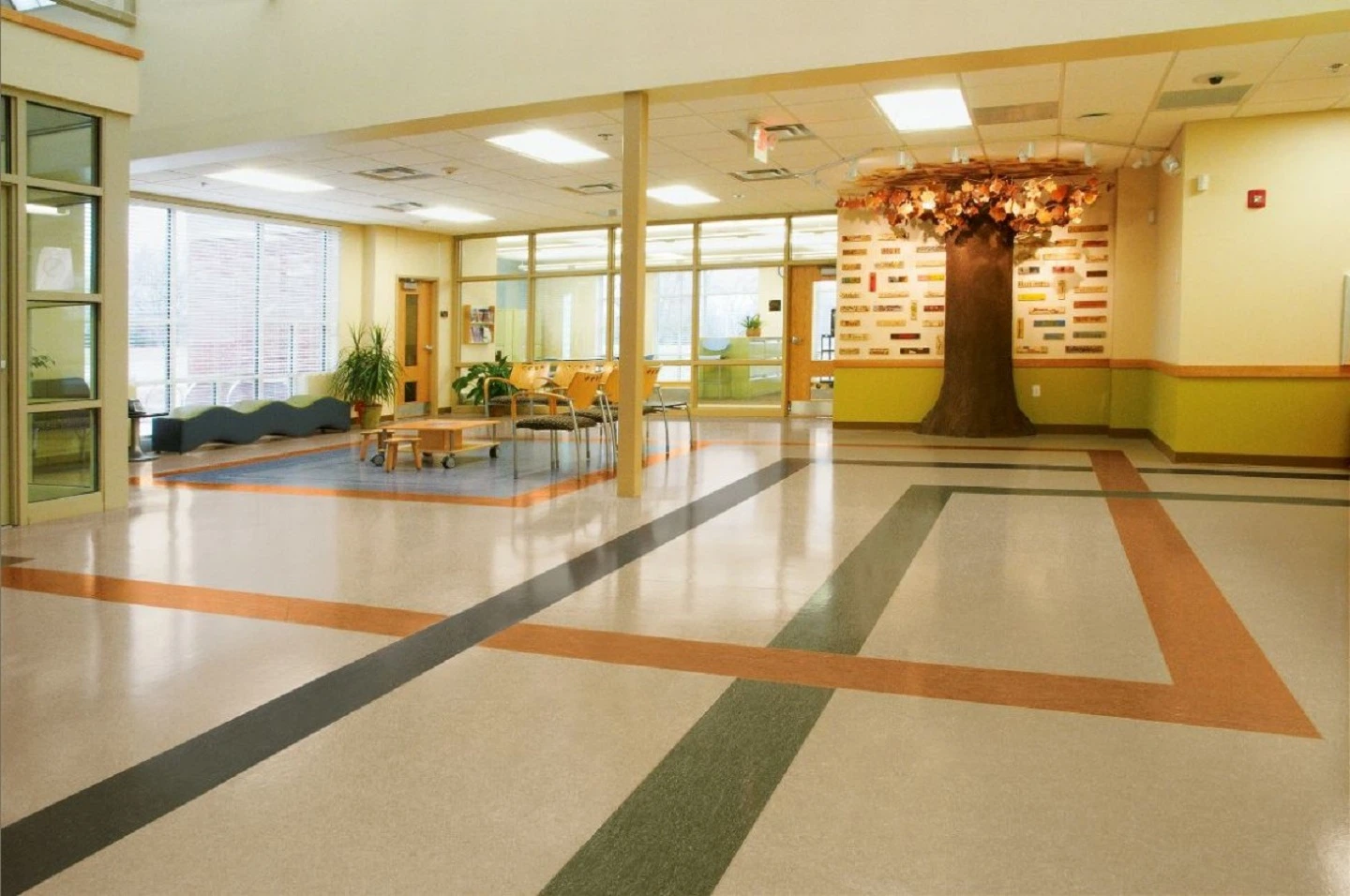
Linoleum is an eco-conscious choice for educational institutions. Crafted from natural materials such as linseed oil and wood flour, it aligns with sustainability goals. Linoleum is robust and capable of enduring the rigorous demands of educational settings, from classrooms to common areas. It is also easy to maintain and inherently resists stains, ensuring a clean and hygienic environment. Educational facilities often appreciate linoleum for its low environmental impact, as it is biodegradable and contains no harmful chemicals. Its timeless appeal and range of color options allow schools and universities to maintain an inviting and environmentally responsible interior.
Ceramic or Porcelain Tile
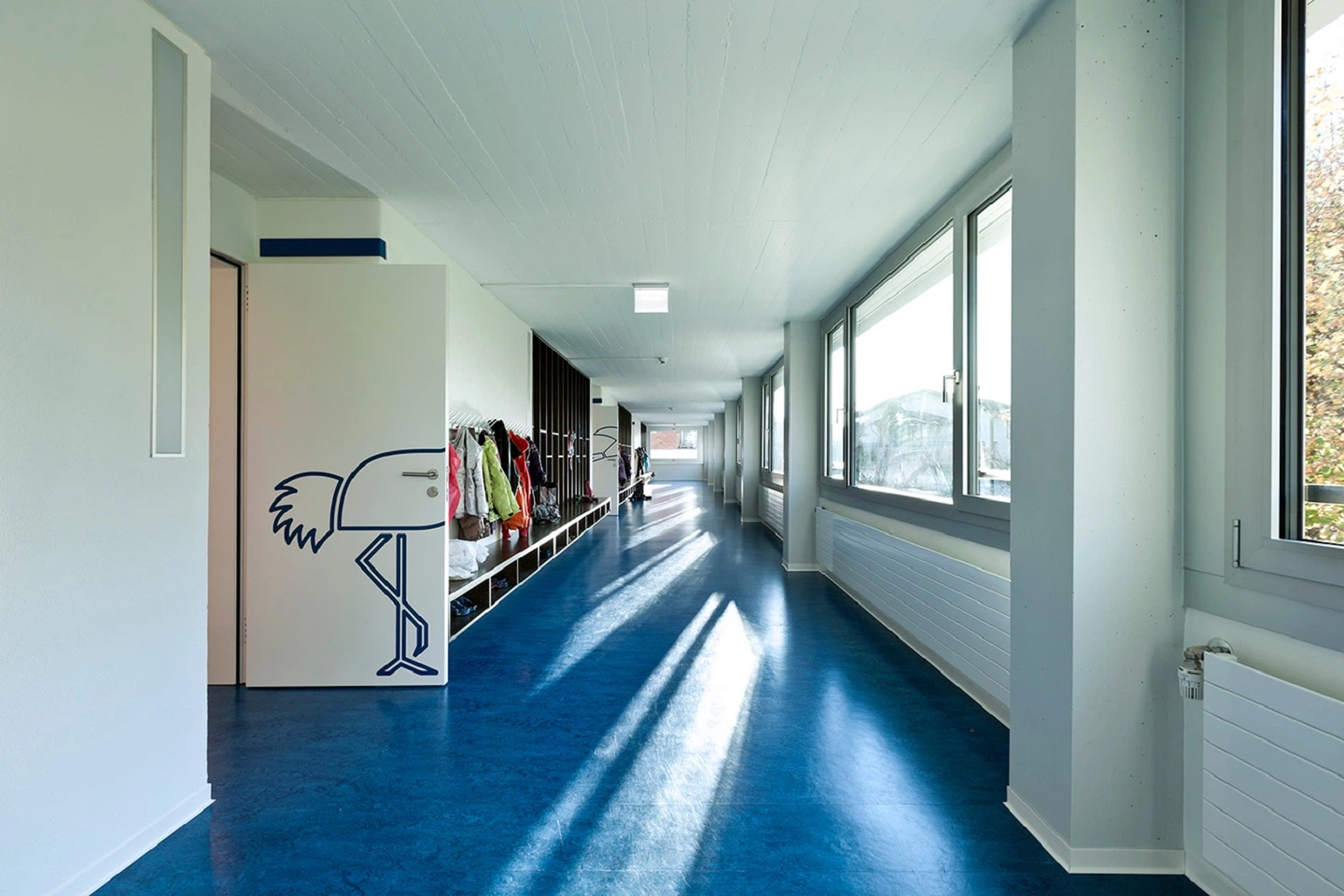
Ceramic and porcelain tiles have a reputation for durability, making them an excellent choice for educational spaces with high foot traffic. These tiles resist stains, water, and daily wear, ensuring a long-lasting, low-maintenance solution. In addition to their functional benefits, tiles come in many designs, allowing schools to create visually engaging environments. Whether used in entranceways or corridors, their easy-to-clean surface makes them suitable for maintaining a clean and hygienic atmosphere. Tiles can be selected to match various spaces’ aesthetics, enhancing the educational facility’s overall look and feel.
LVT (Luxury Vinyl Tile)

LVT offers the aesthetics of natural materials like wood or stone with the durability and affordability of vinyl. This flooring type is ideal for administrative areas and office spaces within educational facilities.
Epoxy Flooring

Laboratories and science classrooms often require specialized flooring. Epoxy flooring, highly resistant to chemicals, stains, and scratches, fits the bill. It can be customized with colors and patterns, creating an engaging atmosphere for scientific exploration.
Hardwood Flooring

While less common in educational facilities, hardwood can impart a warm and inviting atmosphere in administrative offices and library reading areas. Ensure durability by selecting hardwood flooring material with a robust finish.
Your flooring choice is a foundational element in the ever-evolving world of education. It contributes to students’ and staff’s physical comfort and safety and shapes the learning experience. When selecting flooring for educational spaces, consider the specific needs of each area within your facility. Your guiding principles should be safety, durability, ease of maintenance, and aesthetic harmony.
Moreover, it’s essential to ensure that your chosen flooring material complies with regional regulations and standards for educational facilities. Don’t hesitate to consult with our flooring professionals, who specialize in educational environments, when in doubt. Our expertise can be useful in making informed decisions that promote an atmosphere where learning, creativity, and well-being flourish.
In closing, remember that your institution’s flooring is not just a surface; it’s an investment in the future of your students and the environment you provide for their growth and development. Make it a foundation for success, where knowledge is cultivated and dreams take root.



Did you find what you were looking for?